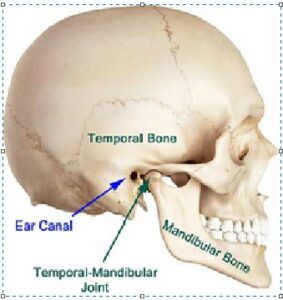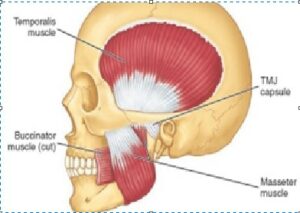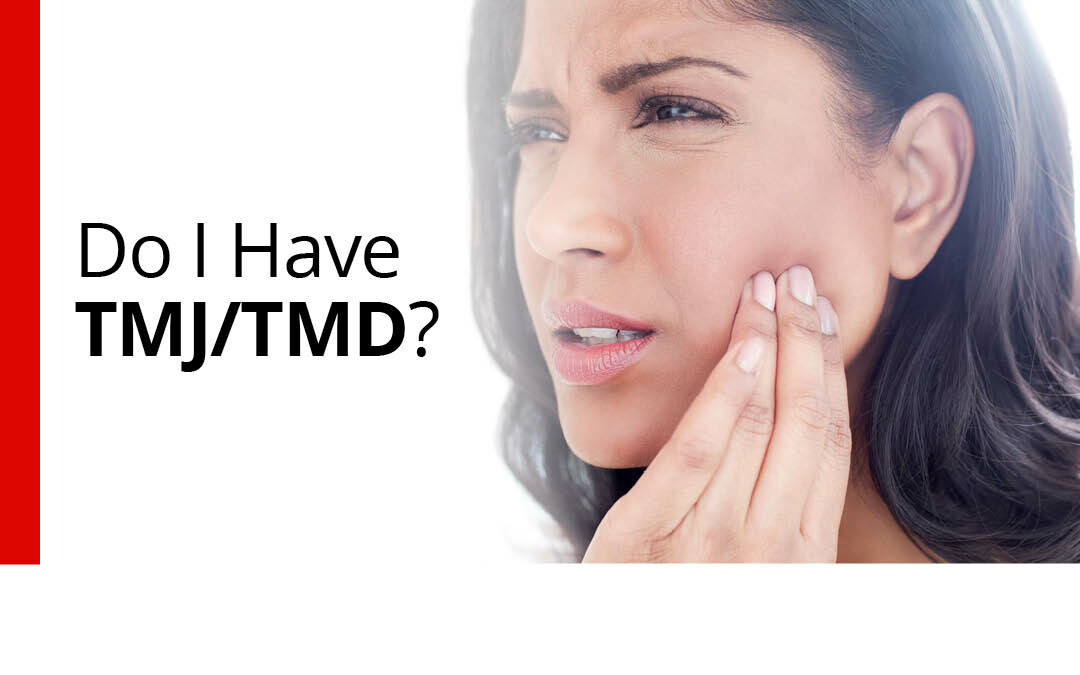Do I Have TMJ/TMD?
Jaw pain can be scary and confusing. However, once we identify one of the three main factors causing it, treatment is very effective!
Anatomy of the TMJ:
The temporomandibular joint is where the jaw bone, a.k.a. the mandible, connects to the temporal region of the skull. Hence the term temporomandibular joint. But that’s a long word to say and write out, so it’s abbreviated “TMJ.” Our jaw is designed to move up and down allowing us to talk and eat, and it also has some movement side to side. When the normal movement of the jaw gets disrupted, it can cause pain in the jaw and face as well as headaches. This is called Temporomandibular Dysfunction or TMD for short. In normal anatomy, everyone has 2 TMJ’s, but not everyone has TMD.

Muscles move joints, and there are three main pairs of muscle that move our TMJ’s. They are called the “muscles of mastication” which is fancy speak for “muscles of eating.”
The masseter, temporalis and pterygoid (pronounced “terry goid”) muscles are our muscles of mastication. They are the muscles responsible for helping us close the jaw and chew food. This brings calories, vitamins and minerals into our body allowing us to survive and thrive! However, these muscles can also be one source of jaw and face pain.

How do I know if I have TMJ/TMD?
If your jaw clicks or deviates to one side when opening or closing or doesn’t open as wide as it once did, you may have TMD. Headaches can be present around the face, or over the temporal region of muscles that move the jaw on the side of the head. Some individuals who have TMD have a history of trauma to the jaw from sports or other accidents. And more commonly between males and females, TMD presents in the female population.
How is TMJ/TMD diagnosed?
At KC Performance Chiropractic & Rehab, we believe everyone deserves a chance to share their story. Once we know the history behind your pain, we conduct a thorough assessment and exam. Many times individuals with jaw or face pain also have complaints of neck pain and headaches. We examine the movements of the neck, and we move on to the jaw. We look at how wide the individual can or can’t open their mouth. We look at the normal movements of the jaw, we assess for popping or clicking upon opening or closing, and we check the muscles of the face and jaw for tightness and pain. Once it’s determined what is causing the jaw pain, we treat it accordingly.
What can I do at home to help my TMJ/TMD?
Quite often, the individual already knows they grind their teeth at night or clench their jaw during the day. Breaking up that habit is paramount in getting the condition to resolve.
Finding an outlet for stress is also beneficial since many clench or grind during times of increased stress or anxiety. Also in certain cases, your dentist can make you a special mouth guard to wear at night. This guard is beneficial because it doesn’t allow one to clench their teeth completely which helps keep the muscles of the jaw from being so tight and painful. We also ask the person to make sure they aren’t biting pens or pencils and remind them not to chew gum during the day so the jaw muscles don’t become overworked. Overworked muscles can become sore and achy leading to their headaches or jaw and face pain.
How is TMJ/TMD treated?
At KC Performance Chiropractic & Rehab, we believe proper education about the condition is the first step. This allows healing to begin and empowers you to take an active role in your treatment and recovery. In the clinic, we use a combination of Active Release Technique (A.R.T.), muscle energy techniques, dry needling/ western medical acupuncture, and chiropractic adjustments to restricted joints in the upper back and neck. And finally, depending on the results of the exam, we assign a jaw mobilization exercise, an exercise for the muscles of the jaw, or both to help the condition resolve quickly. This approach of treating the muscles and joints delivers fast results without surgery, injections, or medications. And even better, this works for people who have had jaw pain for years or just a few months!
How do I get started with treatment?
If you’re near the Kansas City area, we’d love to help you resolve your temporomandibular dysfunction! No medical referrals are needed. If you aren’t near Kansas City, we can help you find a great chiropractor or other practitioner in your area. Don’t keep dealing with the pain in your TMJ. Let us help you resolve it permanently by booking an appointment on our website or by giving us a call!

